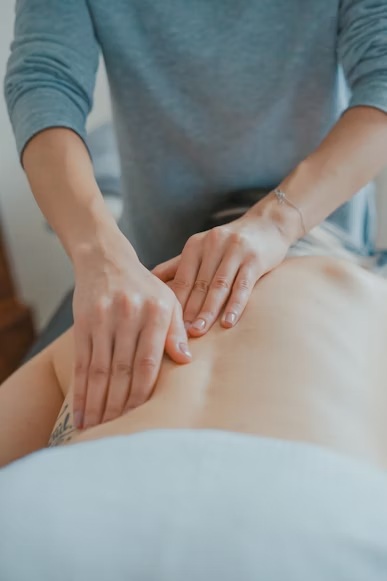
Exercise is vital for health, promoting all kinds of benefits from healthier bones to improved mood. However, physical activity can lead to discomfort for many. This usually signals underlying health issues that must be addressed promptly to avoid exacerbating them.
Solving these problems does not always have to be a complicated affair. In fact, natural support with dietary changes and additional supplements can go a long way. Let’s examine three common aches you might experience during your workouts and how to solve them naturally.
1. Knee Pain
Knee pain is usually caused by inflammation, arthritis, and overuse. However, it can also have causes unrelated to a severe medical condition. For instance, knee pain during squats might mean your posture is incorrect; misaligned hip muscles, knees, and ankles can put strain on your knee, causing you pain as you squat. Similarly, you may have weak gluteal muscles, which can lead to overexertion of your knee.
The first thing you need to do to get rid of knee pain during workouts is a proper warm-up; you must loosen up your hips and activate your glutes with leg swings, hip circles, and lunges. You can also practise foam rolling to relieve tightness in your muscles. Additionally, it is essential to pay close attention to your form during exercise.
If you’re looking for a natural inflammation control approach, curcumin, a component of turmeric, can be an excellent anti-inflammatory and antioxidant. You can also use curcumin for arthritis, which can be another cause of joint pain. Vitamin C can also get the job done, so have plenty of citrus fruits and (if needed) supplements to heal your joints.
2. Lower Back Tightness
Overuse of muscles is a common cause of lower back tightness. You may feel stiffness in the area after exercises such as deadlifts and squats due to pressure on your spinal cord or nerves, or tightening of your hip flexors.
You can start working on this issue by correcting your form. Ensure that your core is braced during lifts while your spine stays neutral. You must keep your glutes fully engaged to avoid overexerting your back. However, your diligence must also accompany your post-workout. Once you’re done exercising, work on gently decompressing your muscles. You can practise yoga poses such as Child’s Pose, Happy Baby, and Cat-Cow for this.
The best foods for muscle recovery include berries, spinach, eggs, etc. You can also take tart berry, watermelon, pomegranate, and beet juices to help. Omega-3s are equally important for back pain, so eat fatty fish like salmon, mackerel, herring, and sardines. Additionally, consume anti-inflammatory foods to reduce post-workout soreness.
3. Shoulder Pain
You may experience shoulder pain when doing overhead presses. This can be due to, for instance, poor shoulder mobility or a lack of proper warm-up. Sometimes, your rotator cuff tendons might get compressed under the shoulder blade, in a condition known as impingement, leading to sharp, lingering pain.
The first step is to evaluate your pressing form. Ensure your form is appropriate and include mobility drills like banded dislocations, wall slides, and thoracic spine openers to increase your shoulder’s motion range. Avoid the following mistakes:
- Flaring your elbows too wide
- Pressing the bar too far in the front
- Craning your neck forward
- Gripping the bar too wide or too narrow
- Lack of core engagement.
Anti-inflammatory foods work best here, too. Have plenty of chia seeds, flaxseed, and walnuts to reduce swelling and joint pain. Additionally, incorporate calcium-rich dairy in your diet to strengthen your bones.
When to Consult Professionals
While you can manage mild aches with a change in form and diet, continuous pain might be a sign of something more serious. Here are key signs you shouldn’t ignore for each of the types of aches mentioned above.
Knee pain:
- If your knee ache persists or worsens despite corrective measures, it indicates more serious issues such as a torn meniscus, ligament strain, or chronic patellofemoral syndrome. These conditions can worsen with continued exercise, so you must get a professional evaluation.
- Swelling, clicking, or instability in the knee joint may be signs of structural damage like ligament tears, which natural remedies cannot fix.
Lower back tightness:
- If your pain shoots down one leg or causes tingling or numbness, you might be suffering from sciatica, disc herniation, or nerve impingement.
- Persistent pain that limits movement and lasts a long time calls for a clinical assessment. Ignoring this can lead to long-term spine issues.
Shoulder pain:
- Sharp pain, clicking, or weakness are symptoms of serious injuries. Continuing with your workouts might cause permanent damage.
- Pain lasting more than a few days requires targeted physiotherapy and imaging to identify an underlying mechanical dysfunction.
Endnote
Experiencing discomfort during workouts is not uncommon. However, while some issues can be addressed with proper warm-up routines, mobility work, and dietary support, others call for medical intervention. You must take a proactive, natural approach to bring pain relief, while staying smart about seeking help when needed to keep yourself strong, safe, and consistent.
